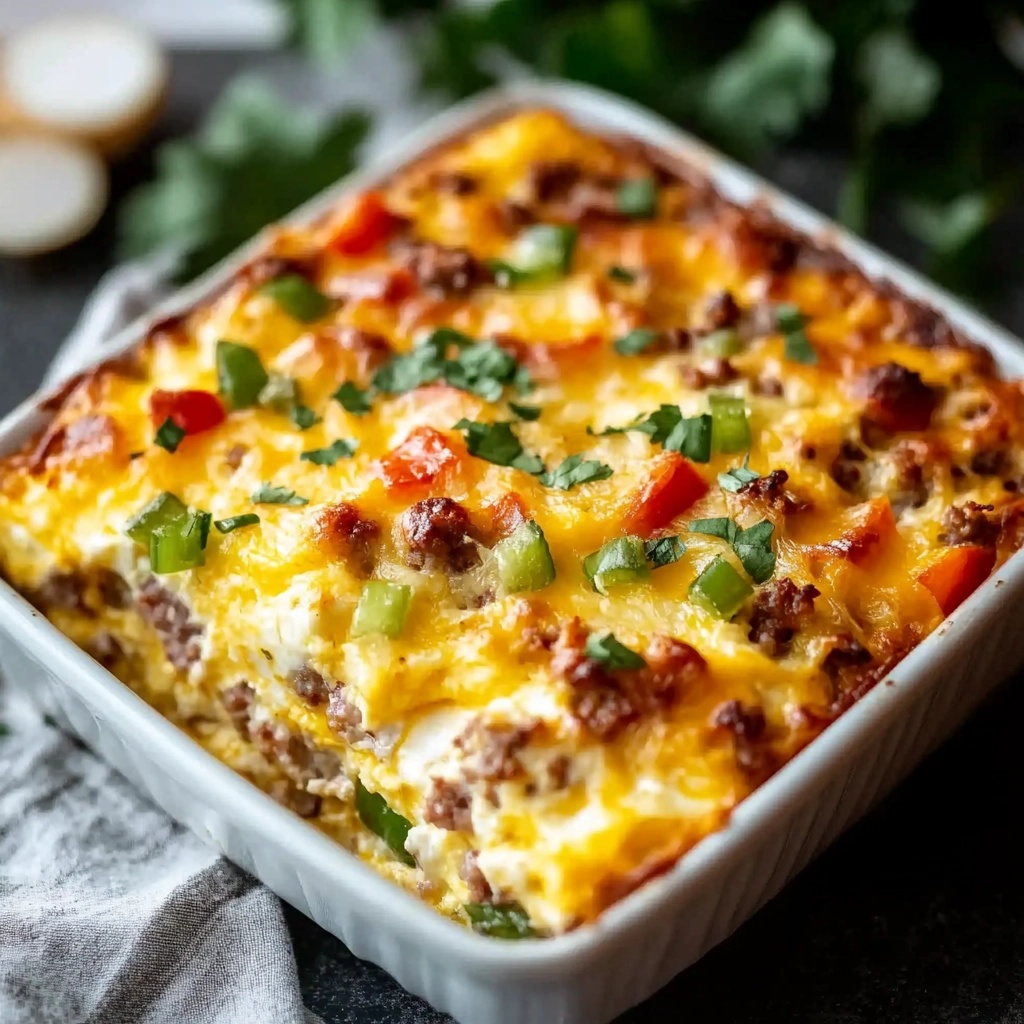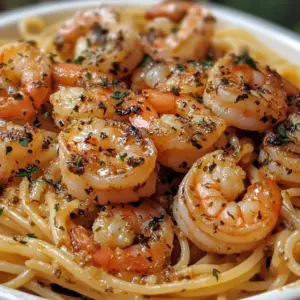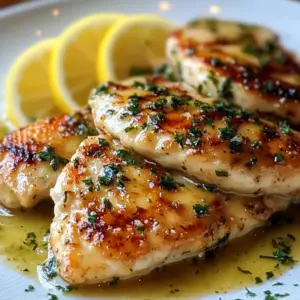Easter brunch is a beloved tradition in many households, offering the perfect opportunity to gather family and friends around the table. When it comes to planning the ideal menu, one dish stands out for its versatility, ease of preparation, and crowd-pleasing nature—egg casseroles. Whether you are hosting a small gathering or a large family celebration, egg casseroles can be a lifesaver in terms of both flavor and convenience.
These casseroles typically combine a variety of ingredients such as eggs, cheese, vegetables, and meats, making them a perfect fit for Easter brunch. With the rich flavors of cheddar cheese, crispy bacon, or even vegetarian options, an egg casserole provides a hearty and satisfying meal to start the day. It’s also an ideal dish for serving a crowd because you can easily adjust the recipe to fit any number of guests.
Egg casseroles are not only delicious but also easy to customize according to your guests’ preferences. Whether you’re looking for a classic dish or something a bit more adventurous, there’s an egg casserole recipe to suit every taste. The best part is that these casseroles can be prepped ahead of time, making your morning stress-free and allowing you to focus on enjoying your Easter celebration.
You can also experiment with different ingredients, from seasonal vegetables to various meats, to make the casserole uniquely your own. The possibilities are endless, and with a simple yet satisfying dish, you can create a memorable meal for Easter brunch.
The Appeal of Egg Casseroles for Easter
What makes egg casseroles such a perfect choice for Easter brunch? Let’s break it down:
-
Ease of Preparation: One of the key advantages of egg casseroles is how easy they are to prepare. With minimal effort, you can assemble a dish that serves a crowd. Simply layer your ingredients, pour over a seasoned egg mixture, and bake. No complicated techniques needed.
-
Crowd-Pleasing: Egg casseroles are universally loved, making them an ideal choice for feeding a group of people. Whether your guests prefer breakfast sausage, bacon, or vegetarian options, everyone will find something to enjoy.
-
Customizable: As mentioned earlier, you can tailor the ingredients to suit your preferences. If you love the taste of fresh spinach or mushrooms, these can be added with ease. You can even swap the classic hash browns for other carb options like bread cubes or potatoes.
-
Make-Ahead: Preparing the casserole the night before Easter can save you time on the big day. You can assemble everything the evening before, then simply pop it in the oven while you enjoy your morning. This makes it a hassle-free dish for a busy holiday morning.
For more inspiration on the different variations you can explore with egg casseroles, check out the Easter Brunch traditions or discover different breakfast casserole ideas on Pinterest.
In addition to being the ultimate dish for Easter brunch, egg casseroles can be served for other occasions too. Whether it’s a family gathering or a holiday breakfast, this dish never disappoints.
Egg Casserole recipes can vary greatly depending on regional preferences and dietary restrictions. Many people choose to substitute traditional ingredients with gluten-free or dairy-free options, making egg casseroles an accommodating dish for those with food sensitivities.

The Perfect Easter Casserole Recipe
Ingredients Breakdown
When crafting the perfect Easter brunch casserole, it’s essential to use the right balance of ingredients. Here’s a breakdown of the key components that come together to create a flavorful and satisfying dish:
-
Eggs: The backbone of any casserole, eggs bind all the ingredients together and give the casserole its rich, creamy texture. Use large fresh eggs for the best flavor and consistency.
-
Milk: A cup of milk helps make the casserole moist and ensures a fluffy texture. Whole milk is ideal, but you can substitute with half-and-half or a dairy-free alternative like almond milk if you prefer.
-
Seasonings: A combination of garlic powder, dried oregano, salt, and black pepper gives the casserole a wonderful savory flavor. Adjust these seasonings based on your personal preference for spice.
-
Breakfast Sausage or Bacon: These ingredients provide that beloved savory, meaty flavor that pairs so perfectly with eggs. Crumbled breakfast sausage or crispy bacon adds richness and depth to the dish. If you’re seeking a lighter alternative, turkey sausage or vegetarian sausage works well too.
-
Shredded Cheddar Cheese: Cheddar cheese is the classic choice for this casserole because it melts beautifully and adds a sharp, tangy flavor. However, feel free to experiment with other cheeses like mozzarella or Monterey Jack for a different taste.
-
Bell Peppers and Onions: These fresh vegetables bring a burst of color and flavor to the casserole. Diced bell peppers (any color) and onions are perfect for adding sweetness and a slight crunch that contrasts nicely with the creamy eggs.
-
Frozen Hash Browns: These are a great base for the casserole and provide a hearty, satisfying layer. Frozen hash browns save time and ensure you get a crispy texture without the hassle of grating potatoes yourself.
-
Butter: Greasing the baking dish with butter ensures the casserole doesn’t stick and helps it crisp up beautifully around the edges.
This combination of ingredients creates a perfectly balanced casserole—creamy, savory, and just the right amount of richness. You can always modify it to suit different tastes or dietary preferences, but these ingredients form the perfect base for your Easter brunch.
For more information about making casseroles with cheddar cheese, check out this Cheddar Cheese page. It’s a great way to discover the history of this beloved cheese and why it’s the best choice for casseroles.
Step-by-Step Instructions for the Perfect Casserole
Follow these simple steps to create the ultimate Easter breakfast casserole that will impress your guests and leave everyone asking for the recipe:
1. Preheat the Oven & Prepare the Baking Dish
-
Preheat your oven to 375°F (190°C). While the oven is heating, grease a 9×13-inch baking dish with butter. This ensures that your casserole doesn’t stick to the sides and creates a golden-brown crust on the edges.
2. Whisking the Egg Mixture
-
In a large mixing bowl, whisk together 6 large eggs, 2 cups milk, 1 tsp salt, ½ tsp black pepper, 1 tsp garlic powder, and 1 tsp dried oregano. Whisk until the eggs are fully blended and the mixture is smooth.
3. Layering the Ingredients in the Baking Dish
-
Once your baking dish is prepared, start by layering the thawed frozen hash browns at the bottom of the dish. Press them down slightly to form an even layer. This provides a sturdy base that holds the casserole together.
-
Next, layer the crumbled breakfast sausage or crispy bacon on top of the hash browns.
-
Sprinkle the diced bell peppers, onions, and shredded cheddar cheese evenly over the meat. These ingredients will create a flavorful and colorful middle layer that will add both texture and taste to the casserole.
4. Pouring the Egg Mixture
-
Pour the egg mixture over the layered ingredients in the baking dish. Make sure it is evenly distributed, covering all the vegetables, meat, and hash browns. The egg mixture will bind everything together as it bakes.
5. Baking Process & Timing
-
Place the baking dish in the oven and bake for 40-45 minutes. You’ll know the casserole is ready when the top is golden brown, and the center is set. You can check the doneness by gently pressing on the center of the casserole. If it feels firm, it’s done.
6. Serving and Enjoying the Casserole
-
Once the casserole is done, let it cool for a few minutes. Then, slice it into squares and serve immediately. This Easter breakfast casserole is best enjoyed hot from the oven, but leftovers can be stored in the fridge for later.
For more tips on perfecting your casseroles, explore the world of Breakfast Sausage to discover the different types and how they can elevate your dish.
By following these steps, you’ll create a delicious Easter brunch casserole that’s sure to be the star of the meal. If you’ve made it ahead of time, simply reheat it in the oven before serving, ensuring your guests enjoy a hot, satisfying meal.

Customizing Your Easter Casserole
Ingredient Variations
One of the great things about egg casseroles is their flexibility. You can easily adjust the ingredients to suit your family’s tastes or dietary needs. Here are a few ways you can personalize your Easter casserole:
-
Meat Options: The classic casserole calls for either breakfast sausage or bacon, but you can get creative by swapping in other meats. Try adding ham for a savory twist, or experiment with turkey sausage or chicken sausage for a lighter version. If you’re serving guests with dietary preferences, consider making a vegetarian casserole by omitting the meat altogether and replacing it with extra vegetables like spinach, tomatoes, or even tofu.
-
Cheese Variations: Cheddar cheese is the go-to option for its sharp flavor, but why not mix things up? You can substitute it with other types of cheese such as mozzarella, Monterey Jack, or feta. These cheeses melt differently, so you might end up with a creamier or tangier casserole depending on your choice. Swiss cheese also pairs wonderfully with ham if you decide to go that route.
-
Vegetable Options: Vegetables not only add color but also bring a fresh, healthy element to your casserole. You can stick with the classic bell peppers and onions, or try adding other spring vegetables like asparagus, zucchini, or mushrooms. Fresh spinach or kale are great options too if you want a more nutrient-packed dish.
-
Add-ins: If you like extra texture or flavor, consider adding sun-dried tomatoes, jalapeños, or even roasted red peppers. These ingredients will infuse your casserole with additional flavors that complement the eggs and cheese perfectly.
For more ideas on customizing your casseroles, you can check out this Vegetarian Breakfast Casserole board on Pinterest, which showcases various ways to make the dish more plant-based or lighter in calories.
Making It Healthier
If you’re looking for a healthier take on the traditional Easter breakfast casserole, there are several swaps you can make without sacrificing flavor:
-
Use low-fat or skim milk: Instead of whole milk, you can use low-fat milk or even unsweetened almond milk for a dairy-free version. These alternatives will reduce the calorie count without affecting the texture too much.
-
Swap out the meat: Choose leaner meat options such as turkey sausage, chicken sausage, or even plant-based meats like tofu or tempeh. These options will significantly lower the fat content while still offering that savory flavor.
-
Increase the vegetable content: Load up the casserole with more vegetables to replace some of the meat and cheese. Vegetables like spinach, broccoli, and zucchini not only make your casserole healthier but also add vibrant color and a variety of textures.
-
Use whole grain or gluten-free alternatives: If you have guests who are gluten-sensitive, you can replace the hash browns with gluten-free options like quinoa or gluten-free bread cubes. Sweet potatoes could also be a fantastic substitute for hash browns for a healthier, lower-carb version.
Making these swaps can help you create a lighter casserole that still feels indulgent and satisfying. For more tips on healthy brunch recipes, be sure to check out this Pinterest Healthy Brunch Recipes page, which offers a variety of ideas to make your Easter brunch a nutritious feast.
Gluten-Free & Dairy-Free Options
For those with gluten or dairy sensitivities, egg casseroles can still be enjoyed with a few simple substitutions. Here’s how you can make the casserole safe for those with these dietary restrictions:
-
Gluten-Free: If you or your guests are following a gluten-free diet, make sure to choose gluten-free hash browns or even gluten-free bread cubes as the base for your casserole. Additionally, ensure any processed meats, like sausages, are labeled gluten-free.
-
Dairy-Free: To make your casserole dairy-free, simply substitute the cheddar cheese with a dairy-free alternative. There are many excellent dairy-free cheese options on the market, such as daiya or Violife, which melt well in casseroles. For the milk, use unsweetened almond milk, soy milk, or coconut milk for a rich, creamy texture that’s perfect for this dish.
By making these small adjustments, your casserole can become a dish that caters to a wider range of dietary needs, without compromising flavor.
For more information about gluten-free and dairy-free living, you can explore Gluten-Free Foods on Wikipedia or check out a wide range of gluten-free and dairy-free recipe ideas on Pinterest.
Serving and Pairing Your Easter Casserole
Best Side Dishes to Serve with Your Easter Casserole
An Easter brunch isn’t complete without a variety of side dishes to complement your egg casserole. Here are some fantastic options to pair with your casserole that will add flavor, texture, and color to your table:
-
Fresh Fruit Salad: A light and refreshing fruit salad is a perfect contrast to the richness of your casserole. You can use a mix of berries, citrus fruits, pineapple, and grapes for a seasonal touch. Adding fresh mint or a drizzle of honey can elevate the flavor even further.
-
Roasted Vegetables: For a savory option, serve roasted asparagus, carrots, or brussels sprouts on the side. These vegetables not only complement the flavors in the casserole but also add a nice crunch and slight caramelization from the roasting.
-
Crispy Bacon or Sausage: Although your casserole already includes bacon or sausage, serving extra crispy bacon on the side adds an irresistible crunch that pairs well with the soft, creamy texture of the casserole. You can also offer different types of sausages, such as turkey sausage or vegetarian sausage, to cater to diverse preferences.
-
Buttery Croissants or Rolls: Soft, buttery croissants or freshly baked dinner rolls make a great addition to any brunch. They’re perfect for sopping up any remaining egg mixture and provide a delightful carb option for those who want a more filling brunch experience.
-
Pickled Vegetables: A tangy side like pickled onions, pickled cucumbers, or pickled beets can cut through the richness of the casserole, offering a nice balance of flavors and adding a bit of zest to the meal.
These side dishes will not only round out your Easter brunch but also provide a variety of textures and flavors, from sweet and tangy to savory and hearty. Consider mixing and matching these options based on your guests’ preferences and the overall theme of your brunch.
For a more in-depth look at pairing food with casseroles, you can explore this Roasted Vegetables board on Pinterest, which features a variety of roasted vegetable recipes that pair perfectly with egg casseroles.
Beverage Pairings
No Easter brunch is complete without the right drinks to accompany your meal. Here are some beverage options that will elevate the experience:
-
Coffee: A rich, hot cup of coffee is a classic beverage for any brunch, especially when paired with the savory, cheesy flavors of the egg casserole. You can offer regular coffee or a decaf option for guests who prefer a lighter pick-me-up. To add a touch of elegance, serve with cream or flavored syrups like vanilla or caramel.
-
Mimosas: A refreshing glass of mimosas is a brunch favorite. The combination of champagne and orange juice is light, fruity, and bubbly—perfect for celebrating Easter with family and friends. You can even get creative by adding a splash of pomegranate juice, cranberry juice, or other fruit juices for a twist on the classic.
-
Sparkling Lemonade: For those who prefer a non-alcoholic drink, sparkling lemonade is an excellent choice. The tartness of the lemon perfectly complements the richness of the casserole, and the bubbly carbonation makes it a festive option for brunch. You can also add fresh mint or citrus slices to enhance the flavor.
-
Iced Tea: If you’re hosting an Easter brunch in warmer weather, consider offering iced tea. It’s refreshing, and you can serve it sweetened or unsweetened, depending on your guests’ preferences. Adding a splash of lemon or peach can give the tea a unique twist.
By offering a mix of coffee, juice, and sparkling beverages, you’ll ensure that everyone has something to enjoy while sipping and indulging in your delicious casserole.
For some refreshing ideas on making the perfect mimosa or other brunch drinks, check out this Mimosas Pinterest board, which features creative recipes and pairing suggestions.

Frequently Asked Questions (FAQ)
Can I make this casserole ahead of time?
Yes, one of the best features of this Easter breakfast casserole is that it can be prepared the night before. Simply follow all the steps in the recipe, but instead of baking, cover the dish with foil and refrigerate it overnight. The next morning, simply pop it in the oven and bake as directed. It may need an extra 5-10 minutes of baking time since it’s starting out cold. This makes it a convenient choice for Easter morning when you want to focus on enjoying your guests instead of scrambling in the kitchen.
Can I freeze leftover casserole?
Absolutely! If you have leftovers, you can freeze the casserole for future use. To do this, cool the casserole completely, then wrap it tightly in plastic wrap and aluminum foil. Label it with the date and store it in the freezer for up to 3 months. When you’re ready to enjoy it, defrost it in the fridge overnight and reheat in the oven at 350°F (175°C) for about 20-25 minutes, or until heated through.
How do I know when the casserole is done?
The casserole is done when it is golden brown on top and the center is set. You can check the doneness by gently pressing the center of the casserole with a spoon or your finger. If the center feels firm and the casserole no longer jiggles, it’s ready to come out of the oven. A quick test you can also do is insert a knife into the center; it should come out clean if the casserole is fully cooked.
Can I make a vegetarian version of this casserole?
Yes, you can easily make this casserole vegetarian by skipping the breakfast sausage or bacon. Instead, increase the amount of vegetables, such as spinach, zucchini, mushrooms, or tomatoes, to make up for the missing meat. You can also add in tofu or vegetarian sausage for additional protein. The egg mixture will still hold everything together, and the result will be a flavorful, hearty vegetarian option.
Can I use fresh hash browns instead of frozen?
Yes, you can use fresh hash browns instead of frozen ones. However, fresh hash browns may have more moisture content than frozen, so it’s important to pat them dry with paper towels before layering them in the dish to avoid excess moisture that could make the casserole soggy. You could also use diced potatoes for a different texture, though they may need a slightly longer cooking time.
How do I store and reheat leftovers?
Leftovers should be stored in an airtight container in the fridge for up to 3-4 days. To reheat, you can place the casserole in the oven at 350°F (175°C) for about 20 minutes, or until it is heated through. Alternatively, you can reheat individual portions in the microwave for 1-2 minutes, depending on the size of the portion.
PrintThe Ultimate Guide to Egg Casseroles for Your Easter Brunch
This Easter breakfast casserole is a delicious and easy dish that is perfect for your Easter brunch. Loaded with hearty ingredients such as eggs, cheddar cheese, breakfast sausage, and hash browns, it’s a filling and flavorful dish that will leave your guests satisfied. The best part is that it’s simple to prepare, and you can even make it ahead of time to save yourself some stress on Easter morning.
The casserole’s fluffy, egg-based center is complemented by the crispy edges of hash browns and the savory taste of crumbled sausage and melted cheese. It’s a versatile recipe that can be customized with different vegetables, meats, or cheeses based on your preferences. Whether you’re hosting a large family gathering or a smaller brunch with close friends, this casserole is sure to be a hit.
- Author: Clara
Ingredients
- 6 large eggs
- 2 cups milk
- 1 tsp salt
- ½ tsp black pepper
- 1 tsp garlic powder
- 1 tsp dried oregano
- 2 cups cooked breakfast sausage or bacon (crumbled)
- 2 cups shredded cheddar cheese
- 1 cup diced bell peppers (any color)
- 1 cup diced onions
- 4 cups frozen hash browns (thawed)
- 2 tbsp butter (for greasing)
Instructions
Preheat your oven to 375°F (190°C). Grease a 9×13-inch baking dish with butter.
In a large bowl, whisk together the eggs, milk, salt, pepper, garlic powder, and oregano.
Layer the bottom of the greased baking dish with the thawed hash browns. Press them down slightly to form an even layer.
Top the hash browns with the crumbled breakfast sausage or bacon, followed by the diced bell peppers, onions, and shredded cheddar cheese.
Pour the egg mixture over the layers in the baking dish, ensuring everything is evenly covered.
Bake for 40-45 minutes, or until the casserole is set in the middle and the top is golden brown.
Let the casserole cool for a few minutes before slicing and serving.
Serve immediately and enjoy!
Notes
-
Make-Ahead Tips: You can assemble the casserole the night before and refrigerate it overnight. Just bake it the next morning, but be sure to add an extra 5-10 minutes to the baking time if it’s cold from the fridge.
-
Freezing: This casserole can be frozen for up to 3 months. Be sure to wrap it tightly in plastic wrap and foil before freezing. To reheat, allow it to defrost overnight in the fridge and bake at 350°F (175°C) until heated through.
-
Vegetarian Option: For a vegetarian version, omit the sausage and bacon, and increase the vegetables, such as spinach, zucchini, and tomatoes. You can also replace the meat with vegetarian sausage or tofu for additional protein.
-
Gluten-Free Option: If you need a gluten-free casserole, ensure the hash browns and sausages you use are gluten-free. You can also replace the hash browns with gluten-free bread cubes or sweet potatoes.




